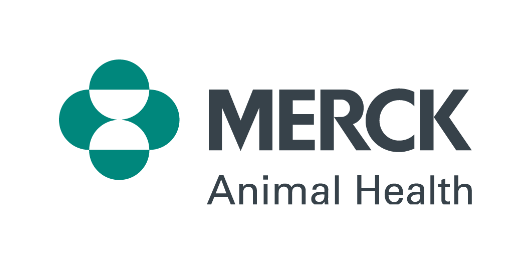Cat Owners: “Are You Missing The Signs?”
New Awareness Campaign Sponsored by Merck Animal Health to Help Identify the Signs of Feline Hyperthyroidism
MADISON, NJ January 12, 2015 – Merck Animal Health (known as MSD Animal Health outside the United States and Canada) is launching a new global awareness campaign designed to help cat owners recognize the signs of feline hyperthyroidism and identify if their cat may be at risk for the fatal disease. The campaign features an interactive risk-assessment quiz that asks cat owners simple questions about their cat’s body condition and behavior to help them identify if they should consult their veterinarian to test their cat for feline hyperthyroidism.
Recent prevalence studies in many countries show that at 1 out of 10 cats aged 9 years old and older are hyperthyroid.1-4 Recent market research in Europe found that 70% of veterinarians believe that hyperthyroidism in cats is underdiagnosed because pet owners don’t recognize the signs associated with the disease.5 Veterinarians believe it is important to help cat owners recognize that, as their cat ages, they may not see the signs of feline hyperthyroidism or they may mistake changes in their cat for regular aspects of growing older.
“We want to help cat owners to evaluate their cat’s body condition and behaviors to encourage them to visit their veterinarian if they think their cat may be at risk,” said Thierry Martine, Merck Animal Health. “If left untreated, feline hyperthyroidism is fatal. However, if caught in time, it can be well managed with medication or other treatments.”
The most common signs of feline hyperthyroidism are weight loss and poor body condition. Other frequent signs include increased appetite, increased thirst and urination, restlessness or aggression and gastrointestinal signs.6
Feline hyperthyroidism can be diagnosed by a veterinarian using a few simple tests. If diagnosed, there are treatment options available to manage the condition. Cat owners who want more information should talk to their veterinarians.
To take the quiz to find out if your cat may be at risk for feline hyperthyroidism, please visit www.hyperthyroidism-cat.com.
About Merck Animal Health Today’s Merck is a global healthcare leader working to help the world be well. Merck Animal Health, known as MSD Animal Health outside the United States and Canada, is the global animal health business unit of Merck. Through its commitment to the Science of Healthier Animals™, Merck Animal Health offers veterinarians, farmers, pet owners and governments one of the widest range of veterinary pharmaceuticals, vaccines and health management solutions and services. Merck Animal Health is dedicated to preserving and improving the health, well-being and performance of animals. It invests extensively in dynamic and comprehensive R&D resources and a modern, global supply chain. MSD Animal Health is present in more than 50 countries, while its products are available in some 150 markets. For more information, visit www.merck-animal-health.com or connect with us on LinkedIn.
Merck Forward-Looking Statement This news release includes “forward-looking statements” within the meaning of the safe harbor provisions of the United States Private Securities Litigation Reform Act of 1995. These statements are based upon the current beliefs and expectations of Merck’s management and are subject to significant risks and uncertainties. There can be no guarantees with respect to pipeline products that the products will receive the necessary regulatory approvals or that they will prove to be commercially successful. If underlying assumptions prove inaccurate or risks or uncertainties materialize, actual results may differ materially from those set forth in the forward-looking statements.
Risks and uncertainties include but are not limited to, general industry conditions and competition; general economic factors, including interest rate and currency exchange rate fluctuations; the impact of pharmaceutical industry regulation and health care legislation in the United States and internationally; global trends toward health care cost containment; technological advances, new products and patents attained by competitors; challenges inherent in new product development, including obtaining regulatory approval; Merck’s ability to accurately predict future market conditions; manufacturing difficulties or delays; financial instability of international economies and sovereign risk; dependence on the effectiveness of Merck patents and other protections for innovative products; and the exposure to litigation, including patent litigation, and/or regulatory actions.
Merck undertakes no obligation to publicly update any forward-looking statement, whether as a result of new information, future events or otherwise. Additional factors that could cause results to differ materially from those described in the forward-looking statements can be found in Merck’s 2013 Annual Report on Form 10-K and the company’s other filings with the Securities and Exchange Commission (SEC) available at the SEC’s Internet site (www.sec.gov).
1Boretti FS, Siber-Ruckstuhl NS, Gerber B, et al. Thyroid enlargement and its relationship to clinicopathological parameters and T(4) status in suspected hyperthyroid cats. Journal of Feline Medicine and Surgery. 11:286-292.
2 Wakeling J, Elliott J, Syme H. (2011) Evaluation of predictors for the diagnosis of hyperthyroidism in cats. Journal of Veterinary Internal Medicine. 25:1057-1065.
3 Gallagher B, Mooney CT. (2013) Prevalence and risk factors for hyperthyroidism in Irish cats from the greater Dublin area. Journal of Veterinary Internal Medicine. 27:689.
4 Sassnau R. (2005) Epidemiologische Untersuchungen zur Pravelenz der feline Hyperthyreose. Deutsche Veterinarmedizinische Gesellschaft Service GmbH.
5 Data on file. (2014). (Market research conducted in UK, France, Spain, Denmark and Italy)
6 Frenais, R., Rosenberg, G., Burgaud S, Horspool. L.J.I., Clinical efficacy and safety of a once-daily formulation of carbimazole in cats with hyperthyroidism. Journal of Small Animal Practice 2009; 50:510-515.
